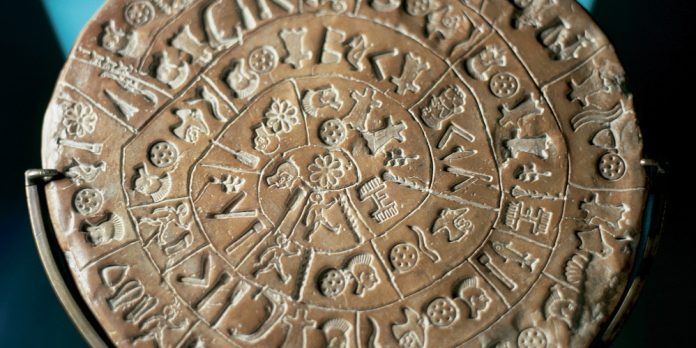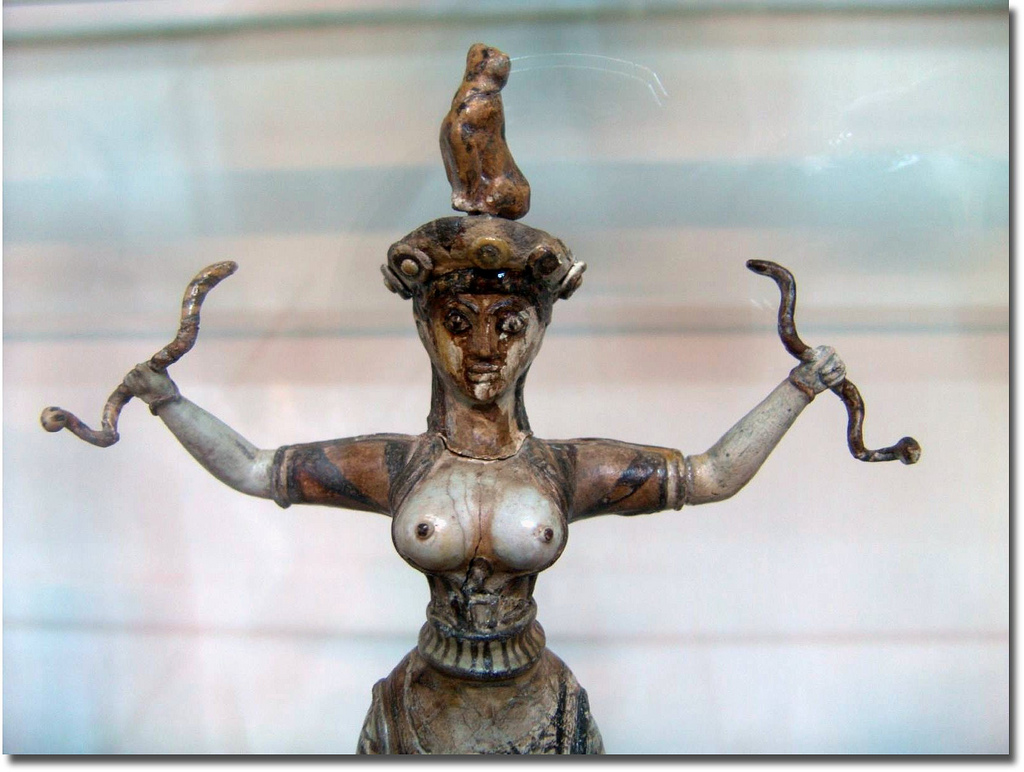
Celebrating the Valentine’s day nowadays may have become a consumerist fashion to show how we venerate the magic of Love. But, one way or another, love and passion has always been the dominant force in the history of human history.
Phaistos Disc is one of the greatest archaeological and linguistic mysteries. It was probably manufactured in the 17th century BCE on the island of Crete in today’s Greece. It was a product of the once great Minoan civilization that flourished from about 2600 to 1100 BC in Crete and other Aegean islands. Historians and archaeologists call the civilization like that after the mythical king Minos.
The clay disc features an inscription which the scholars could not successfully decipher up to now. Some people refer to the script as “Minoan hieroglyphics” but in fact it is quite different than the Egyptian writing system. The symbols represented syllables of a language that has been unknown to us.
The Goddess that shines
Now, Dr. Gareth Owens, a British-Greek linguist, who has been living in Crete in the last 30 years, claims to be able to read 99% and understand 50% of the famous Phaistos disc.
According to the scholar, the one side of the disc makes reference to the impregnated deity who shines. The second side refers to a deity that sets (like a sun).
The language of the text is an Indo-European one. This means that it belongs to the great linguistic family that sometimes is called “Aryan” (although the term is scientifically infelicitous due to its racist undertones and linguists avoid it). Thus, the so-called “Minoan language” is relative with English, German, Latin, Greek, Sanskrit, Slavic and Celtic languages
Interestingly, the text seems to rhyme, forming a sort of sonnet of 18 verses with many alliterations. There are adjectives describing the goddess. Parts of this text have been found all over Crete on dedications to sanctuaries.
Which was this goddess? According to Owens her name was IQEKURJA, meaning something like ‘pregnant mother’ or simply ‘goddess’. Another name for her is IQEPHAE meaning ‘shining mother’. Is she then like a goddess of dawn?
It is hard to associate this goddess with another one right now. However, we do know that the Cretans created figurines of a female deity called Minoan Snake Goddess or Priestess. Her dominion was over nature and fertility. Her powerful stature and her might are impressing while her being naked-breasted manifests the matriarchal character of the cult.

Xosé Castro Roig (flickr)
Now, that we may be able to hear the name of the goddess, let us call her name loud once again and let us imagine a time when she was the indisputable ruler of the beautiful Mediterranean island of Crete.
